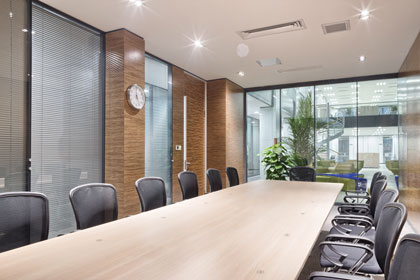Selling a professional practice—whether it’s a medical office, dental clinic, law firm, or consulting business—is a significant decision that involves many factors. While financial performance, client base, and reputation often dominate the discussion, one element that is frequently underestimated is the workspace itself. The physical environment where your practice operates plays a crucial role in determining not only how smoothly the sale process goes but also the ultimate value you can command.
In this article, we’ll explore how your workspace impacts the value of your practice sale and why investing time and effort into your physical space can pay dividends when it’s time to sell.
The First Impression: Setting the Stage for Buyer Confidence
When a potential buyer visits your practice, the workspace is their first tangible experience. It’s not just about the service you provide but also about the environment where it’s delivered. A clean, well-maintained, and thoughtfully designed workspace creates an immediate impression of professionalism and quality.
Buyers tend to evaluate whether your practice feels modern, efficient, and welcoming. A cluttered or outdated office can raise red flags about your management and the state of the business, causing hesitation. On the other hand, a polished and functional space suggests a well-run operation that has been cared for meticulously. This confidence can translate directly into a higher perceived value.
Operational Efficiency and Workflow Impact Valuation
Beyond aesthetics, the workspace’s layout and functionality affect daily operations. An efficiently arranged workspace enables smooth workflows for your team, reducing downtime and improving client or patient experience. When buyers assess a practice, they look at how easily their team could step in and operate without costly disruptions or the need for extensive renovations.
For example, in a medical or dental practice, the placement of equipment, consultation rooms, and staff areas can either facilitate or hinder productivity. A workspace designed to optimize patient flow and staff collaboration often leads to better financial results and happier clients. This operational excellence is something buyers pay close attention to, as it impacts future profitability.
Workspace as a Tangible Asset in Practice Valuation
When valuing a practice, buyers and brokers consider tangible assets alongside intangible ones like goodwill and client lists. Your workspace, including furniture, equipment, technology, and even lease terms, forms part of this tangible asset pool.
If your workspace includes up-to-date equipment, modern furnishings, and advanced technology, it increases the practice’s asset base and adds value. Conversely, worn-out or obsolete equipment and decor may reduce the asking price, as buyers anticipate additional investment post-purchase.
Moreover, a leased space with favorable terms or ownership of a desirable property can significantly affect the sale price. Buyers often prefer a workspace with stable, long-term lease agreements or ownership to avoid future uncertainties.
Compliance and Legal Considerations
In many professional fields, regulatory compliance related to the workspace is mandatory. For example, healthcare practices must meet health and safety standards, accessibility requirements, and licensing regulations concerning their physical environment.
A workspace that fully complies with these regulations is easier to transfer to a new owner. Buyers feel secure knowing they won’t face costly upgrades or legal issues after acquisition. Non-compliance or outdated facilities can lead to negotiation points that lower the sale price or even deter buyers altogether.
Reflecting Your Brand and Client Experience
Your workspace is a physical embodiment of your brand. It communicates your practice’s values, culture, and commitment to quality. A thoughtfully designed space that aligns with your brand identity not only attracts clients but also impresses buyers who want a practice with a strong market position.
Consider how lighting, color schemes, furniture, and layout influence client comfort and perception. For example, a law firm with a classic, professional décor sends a message of trustworthiness and expertise, while a modern tech consultancy might opt for a sleek, minimalistic design to reflect innovation.
A workspace that enhances client experience supports client retention and referrals—both valuable assets to a buyer evaluating the practice’s potential for continued success.
Preparing Your Workspace for Sale: Practical Tips
If you’re planning to sell your practice, preparing your workspace should be a key part of your strategy. Here are some actionable steps to maximize its value:
1. Clean and Declutter
Start by thoroughly cleaning and organizing the entire workspace. Remove outdated materials, broken equipment, and personal items. A tidy environment looks more appealing and shows that the practice is well cared for.
2. Repair and Upgrade
Fix any visible damages like chipped paint, broken fixtures, or faulty lighting. Consider upgrading worn furniture or outdated technology to modern standards. Small improvements can make a big difference in buyer perception.
3. Optimize Layout
Evaluate whether your current layout supports smooth operations. If possible, reorganize to enhance workflow efficiency. Buyers will appreciate a space where staff can easily navigate and perform tasks.
4. Document Compliance
Ensure all legal and regulatory requirements are met. Gather documentation to prove compliance and make it available to prospective buyers, demonstrating a hassle-free transition.
5. Highlight Assets
Prepare an inventory of all tangible assets included in the sale, such as furniture, equipment, and technology. This transparency helps buyers understand the value they’re getting.
The Financial Impact: Workspace Investment vs. Practice Sale Price
Investing in your workspace before a sale can lead to a higher sale price and faster transaction. While some improvements may require upfront costs, the return on investment often justifies them. This is particularly true in competitive markets like vet practice sales, where buyers are looking for turnkey operations with well-equipped and client-friendly environments. Studies and industry reports show that practices with modern, efficient, and well-maintained workspaces tend to sell for a premium compared to those with outdated or poorly maintained facilities. Buyers are willing to pay more to avoid immediate renovation expenses and to start operations smoothly.
Conclusion
When it comes to selling your professional practice, it’s easy to focus solely on financials and client relationships, but your workspace plays a pivotal role in influencing the sale value. A clean, functional, compliant, and well-branded physical space builds buyer confidence, enhances operational efficiency, and adds tangible assets to your practice’s value.
By investing effort into maintaining and improving your workspace before a sale, you position your practice to attract serious buyers and command a better price. Remember, the environment where your practice thrives is more than just a backdrop—it’s an asset that can significantly impact your financial outcome.



